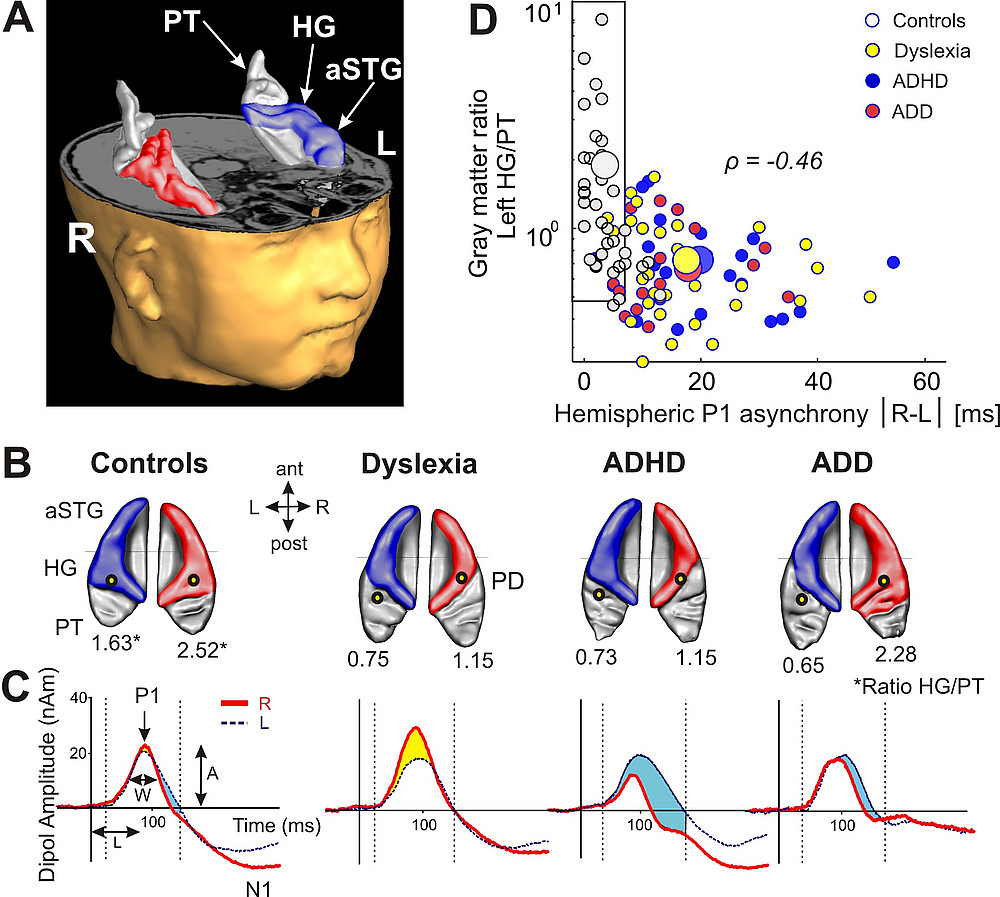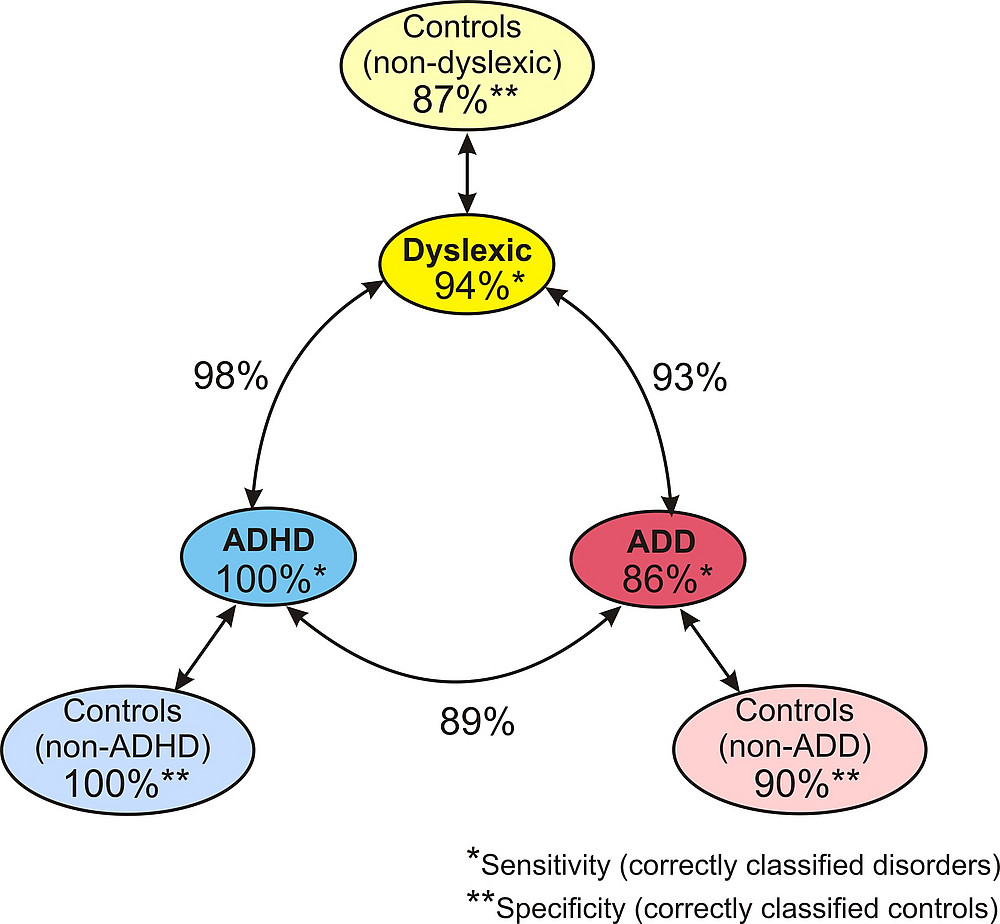Hearing in neurodevelopmental disorders
Individuals with neurodevelopmental disorders are often also affected by central auditory processing disorders. In our current research we are developing tailored listening training programs for children and adolescents with dyslexia, ADHD, ADD, and ASD.
Auditory processing in the brain plays a central role in the cognitive, emotional, and linguistic development of children. Effective recognition of basic acoustic features and more complex patterns is not only essential for learning language but also for reading, writing, and social communication. In individuals with neurodiverse developmental profiles, particularly in dyslexia and attention deficit/hyperactivity disorder (ADHD, ADD), central auditory processing disorders occur significantly more frequently than in the general population (Seither-Preisler et al., 2014). Our research shows that in dyslexia, both the ability to distinguish basic acoustic features (such as frequency, tone onset) and musical patterns (such as meter, rhythm, melody) is significantly reduced. Additionally, subjective sound perception is altered. In ADHD, only impairments in musical pattern recognition can be observed, while in ADD, no auditory peculiarities are evident; see Fig. 1.

Currently, our doctoral Bettina Zeidler is studying the auditory profile characteristic of children with autism spectrum disorder.
We assume that reduced auditory sensitivity in childhood negatively impacts language-related academic performance and social interactions. Therefore, active listening, focused attention, and auditory engagement play a crucial role in academic and life success.
In the Music Psychology and Brain Research Section, we are developing methods to precisely measure auditory processing in the brain using a combination of electrophysiological (MEG, EEG) and imaging (MRI) techniques, along with auditory tests. The neuro-auditory profiles obtained through these methods enable the early detection of atypical processing patterns, which can provide valuable insights into underlying neurodevelopmental disorders; see Fig. 2 (Serrallach et al., 2016).

Fig. 2: Structural and functional neuromarkers of dyslexia, ADHD, and ADD in the auditory cortex of children.
A) 3D reconstruction of an individual auditory cortex; Heschl's gyri are colored blue (left hemisphere) and red (right hemisphere). The planum temporale (posterior triangular structure) is shown in gray.
B) Top view of group-averaged auditory cortices (left: neurotypical control group; to the right: neurodiverse groups Dyslexia, ADHD, ADD). The gray matter volumes in the HGs and PTs of both brain hemispheres differ significantly between the groups.
C) Group-averaged auditory evoked responses to musical sounds for the right (red curve) and left (blue curve) hemisphere. In contrast to the neurotypical group, all three neurodiverse groups show markedly different specific activation patterns.
D) The combination of neuroanatomical (y-axis) and neurofunctional (x-axis) characteristics allows for an almost perfect segregation of the neurotypical group (gray circles) from the three combined neurodiverse groups (colored circles; Dyslexia: yellow, ADHD: blue, ADD: red). Large symbols indicate mean values.
Moreover, our approach successfully identified the developmental disorders dyslexia, ADHD, and ADD with exceptionally high sensitivities (correctly classified cases) and specificities (correctly classified non-affected individuals) and objectively distinguished them from each other; see Fig. 3 (Serrallach et al., 2016).
This opens up promising perspectives for neuroscience-based objective early detection and extended diagnostics of developmental disorders. Our goal is to further advance the described diagnostic approaches and make them increasingly available for child and adolescent psychological practice.
Building on these findings, we are also developing specialized auditory training programs, which are designed to specifically strengthen the relevant neural networks in the brain and accelerate maturation processes. The aim is to improve auditory processing and thus effectively overcome developmental barriers in affected children.

References
Serrallach, B., Groß, C., Bernhofs, V., Engelmann, D., Benner, J., […] Parncutt, R., Schneider, P. & Seither-Preisler, A. (2016). Neural biomarkers for dyslexia, ADHD, and ADD in the auditory cortex of children. Frontiers in neuroscience, 10, 324. http://dx.doi.org/10.3389/fnins.2016.00324
Seither-Preisler, A., Parncutt, R., & Schneider, P. (2014). Size and synchronization of auditory cortex promotes musical, literacy, and attentional skills in children. Journal of Neuroscience, 34(33), 10937-10949.